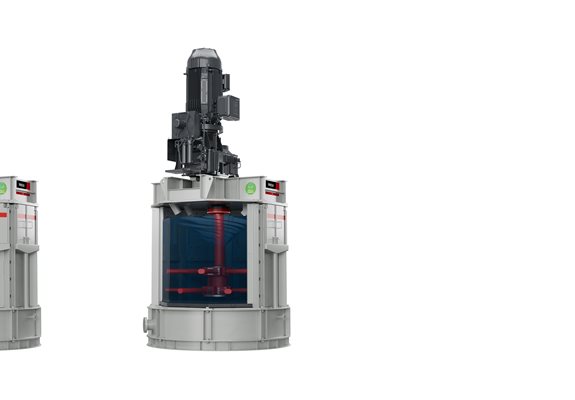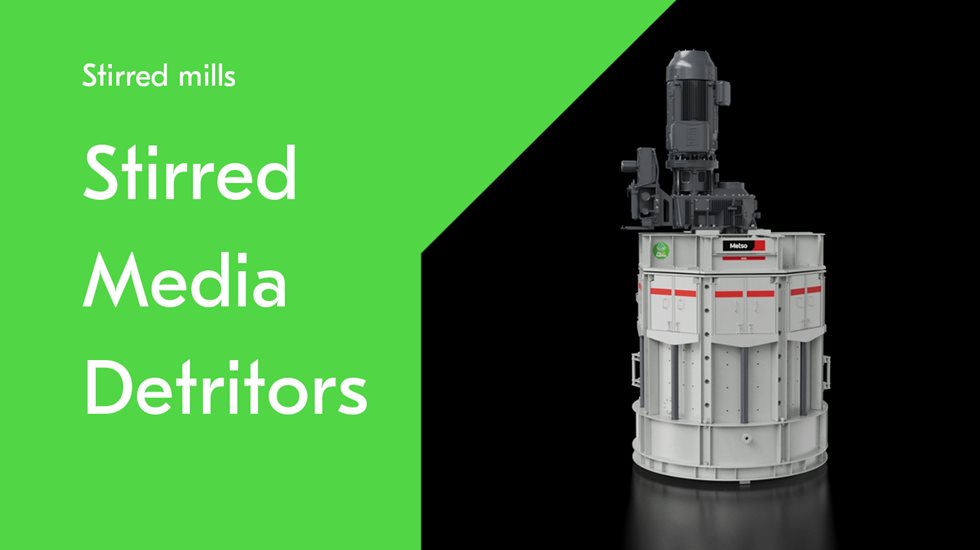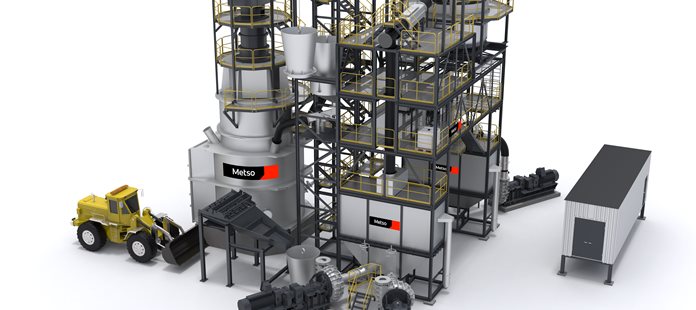The feed slurry enters through a feed spout in the top cover which directs the feed into the bottom of the vortex (bottom of the mill) without any inlet head. Grinding media is added either by the automatic Media Addition System through one of the unused feed ports, or manually through the media feed chute.
Final product leaves SMD through the media retention screens, situated around the top of the body and is collected in an external launder and is then pumped, or flows under gravity, to the next stage in the process.
In operating SMD, there is no set combination of parameters, because the different parameters have influence on each other. Experience and practice usually establish optimum operating conditions with the lab testing indicating the initial set points.
The particle size distribution produced is governed primarily by the throughput and the amount of media and multiple mill arrangement. Primary mill control is by media addition to maintain the required power draw to achieve the desired product. Multiple SMDs can be arranged in parallel or series depending on the circuit requirements to affect the particle size distribution.
SMD Operational Control
The effective operation of the SMD requires the following parameters to be accurately and constantly monitored.
Feed Flow-Rate
This parameter is used in conjunction with the feed density and motor power to establish the grinding rate in kWh/mt. Flow rate should be as steady as possible. If the whole stream is feeding direct to the mill, surge tanks should be considered. Feeding SMD from a thickener or scalping cyclone regulates the flow very well and generates a suitable feed density.
Feed Density
The feed density is required, in conjunction with the feed flow-rate, to establish the feed rate of solids. Typical operational feed density range is 30-60% solids. Optimum grinding efficiency is usually in the range of 40-50% solids.
Motor Power/Media Addition
The power drawn by the SMD motor is required to establish the grinding rate. As the grinding media wears fine enough to exit through the mill screens, the total media charge will diminish, and the power draw will decrease.
Media should be added either manually or automatically to maintain as consistent a power draw as possible. SMD is normally operated at 80-100% of full power.
Grinding Media
The grinding media can be varied with a wide range of alternatives, depending on the application and the process requirements. Grinding media plays an important role in grinding efficiency and mill liner wear life so a high-quality media is beneficial, but an economical solution is also important.


